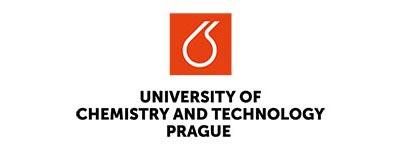Dr. Vasa Radonic
Project coordinator
Location:
BioSense Institute, University of Novi Sad
Dr. Zorana Đinđića 1, 21000 Novi Sad, Serbia
Dr. Vasa Radonic
Project coordinator
Location:
BioSense Institute, University of Novi Sad
Dr. Zorana Đinđića 1, 21000 Novi Sad, Serbia

Research and Development Institute for information technologies in biosystems, Novi Sad, Serbia
BioSense, Research and Development Institute for IT in biosystems, is a pioneer in digital transformation of agriculture in Serbia, founded in 2015. Exploring scientific and technological frontiers regarding the application of IT in agriculture, the Institute strives to deliver state-of-the- art digital solutions to the farming sector in Serbia and the world, in order to ensure higher yields with smaller investments. The Center for sensing technologies focuses on the development of sensors that can detect and measure different parameters and processes in biosystems, and as such be applied agri-food sector, environmental monitoring, and medical applications. To address these challenging tasks, the Center brings together researchers with a range of expertise, spanning from physics and biology to electrical engineering and materials science.

Catalan Institute of Nanoscience and Nanotechnology, Barcelona, Spain
Nanobioelectronics and Biosensors Group
The “Institut Català de Nanociència i Nanotecnologia”, translated to English as Catalan Institute of Nanoscience and Nanotechnology (ICN2), is a non-profit international research institute located in the Bellaterra Campus of the Autonomous University of Barcelona (Catalonia, Spain). It is devoted to generating knowledge, materials and devices for being integrated in information and communications technologies, healthcare, energy and environmental applications. ICN2 is accredited as a Severo Ochoa Centre of Excellence by the Spanish Ministry of Science, Innovation and Universities, and trusted by the Generalitat de Catalunya (Catalan Government), the Spanish National Research Council (CSIC) and the Autonomous University of Barcelona. ICN2 is also a CERCA Centre and one of the founding members of the Barcelona Institute of Science and Technology (BIST) and the Graphene Flagship.
Nanobioelectronics and Biosensors Group (Merkoçi Research Group) is inside the ICN2. The group carries out research on the integration of nanotechnological methods, tools and materials into low-cost, user friendly and efficient sensors and biosensors. The developed (bio)sensors take the advantages of nanoparticles, nanotubes, graphene, nanochannels and other nanomaterials while being integrated into innovative, highly sensitive and scalable platforms with interest for several applications in everyday life. All these platforms are intended to be used even by non-professional users (e.g. rapid diagnostic tests).

National Research Council, Rome, Italy
Department of Biology, Agriculture and Food Science
The National Research Council of Italy (CNR) is the largest public research institution in Italy, boasting a workforce of over 8.000 employees. It engages in multidisciplinary activities, promotes innovation and competitiveness within the national industrial system, offers technologies and solutions to address emerging public and private needs. Within CNR, the mission of the Dr. Sabato D’Auria ’s laboratory is to identify, isolate, produce and manipulate biomolecules for use as stable and specific probes in the design of advanced sensing devices. The Laboratory is located at the Institute of Food Science, Avellino Italy, and it has a well-established expertise in developing advanced luminescence methodologies and optical measurements in biochemical and medical research. The lab staff possesses significant experience in molecular interactions and protein fluorescence, molecular biology, protein surface functionalization, protein production and characterization, and bioinformatics. As regard the instrumentation, the Lab is equipped with state-of-the-art instrumentations for investigating biological interactions. This includes techniques such as FRET, time-resolved FRET, fluorescence polarization, anisotropy decays, fluorescence correlation spectroscopy for single molecule detection, surface plasmon resonance, circular dichroism in the far- and near-UV regions, stopped-flow methodologies, and metal enhanced fluorescence. Instrumentation for protein cloning, expression, and purification: Mini-protean electrophoresis, incubators, PCR, Electrophoresis system, FPLC and HPLC instrument, spectrophotometer. Instrumentation for surface characterization: FT-IR and AFM. Instrumentation for biosensor development and testing: Multiplate reader, BioNavis Surface Plasmon Resonance, Impedenziometric Instrument, Time-resolved fluorometers, Fluorescence Spectroscopy, VIS-NIR-Steady-state fluorometer.

University of Chemistry and Technology, Prague, Czech Republic
Department of Inorganic Chemistry, Nanomaterials and Semiconductors
The University of Chemistry and Technology, Prague is a progressive educational and research-intensive university focusing on technical chemistry, chemical and biochemical technology, materials and chemical engineering, food, the environment, sustainable and green technologies, and informatics, cybernetics and business management related to above-mentioned disciplines. It consists of four faculties – the Faculty of Chemical Technology, the Faculty of Environmental Technology, the Faculty of Food and Biochemical Technology and the Faculty of Chemical Engineering, as well as a number of school-wide institutes, such as School of Business. The university also operates its own science and research Technopark Kralupy and the University Center in Litvínov. Its tradition and extensive scientific and research potential predestined it to educate top experts for industrial practice, research and development and state administration. UCT excels in linking educational activities with high-quality research, both basic and applied. UCT is also characterized by traditional and very close cooperation with industry, active transfer of scientific knowledge into practice, participation in innovation and industrial research and development activities.

This project is funded by the European Union under Horizon Europe under Grant Agreement No. 101159710